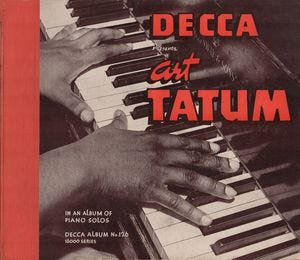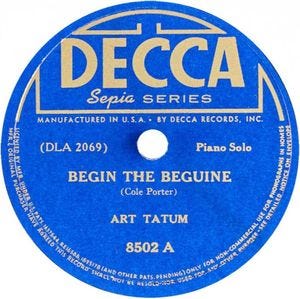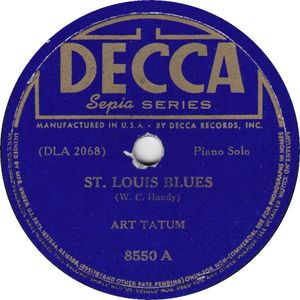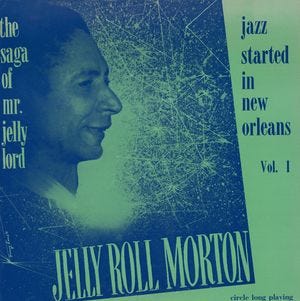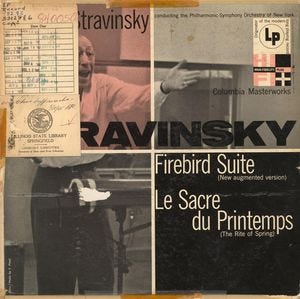Some Jazz Records: Herbie Nichols Clippings
Comments on recordings from musicians and other actors of the jazz scene. Random and not-so-random listening cues from the archives.
Readers interested in Herbie Nichols—or simply in excellent jazz writing—should check out Mark Miller’s remarkable Herbie Nichols: A Jazzist’s Life, currently available in paperback or digital form from Lulu.
Art Tatum, In an Album of Piano Solos, Decca Album 126, 1940, 3 10" 78 rpm; Art Tatum, Begin the Beguine/Rosetta, Decca 8502, ca. 1940, 10" 78 rpm; and Art Tatum, St. Louis Blues/Indiana, Decca 8550, 1941, 10" 78 rpm.
For a couple of months in 1941, until the World War II draft interrupted this work, pianist and composer Herbie Nichols contributed weekly columns to the New York Age newspaper, signing "Herbert H. Nichols." An August 1941 installment was devoted to Art Tatum, who was playing solo piano sets at Greenwich Village’s Café Society. "It is very seldom that a musical giant flashes across the horizon to have his contemporaries and followers acclaim him the way classic jazz pianist Art Tatum has done," Nichols wrote. "And it is once in a lifetime that one may be privileged to listen to a pianist who has a phenomenal technique coupled with an inexhaustible fund of musical ideas such as he has. This is a combination that can’t be beat." Nichols noted that Tatum’s current Decca releases contributed to his growing popularity. "The piano is a musical palette to Art Tatum and he is able to paint any musical thought that come to his mind. Listen to his recording of 'Humoresque' and 'Indiana.' For sheer coloring and novelty they remain musical gems. For technique listen to 'Tiger Rag' and 'Élégie.' If you want to hear him play in the blues style, lend an ear to 'St. Louis Blues,' this last number done in conjunction with Kansas City Joe Turner, shouting blues stylist. He tackles a Spanish rhythm on 'Begin the Beguine.' And then if you want to hear some solid jazz to top it all, listen to 'Rosetta,' 'Ten for Two,' 'I’ve Got [My] Love to Keep Me Warm' or dozens others." Tatum recorded most of these titles for Decca during 1940 Los Angeles sessions. Some were included on a 3-record shellac album (which can be heard in its original form at the Internet Archive). All selections were later included on a 1990 MCA CD.
Jelly Roll Morton, The Saga of Mr. Jelly Lord, Circle L-14001/L-14012, 1950, 12 LPs.
"As a jazz composer, I’ve always felt that I should paint as clear a mental picture as possible of the foundation and the future of jazz music," Herbie Nichols wrote in the liner notes for his Herbie Nichols Trio Blue Note LP. "That is why I draw freely, at times, from early New Orleans pianist, Jelly Roll Morton, who witnessed and took part in the birth of this folk music. I have examined his scores and have had many happy moments listening to his Circle recordings from the Library of Congress Archives. Jelly was an honest extrovert who used the freedom of jazz piano to tell the story of his love of life and the historic times in which he lived." The release by the Circle label of recordings made by Morton at the Library of Congress in 1938 began in the fall of 1947. It yielded a massive set of 12 albums each grouping three to four 12" 78 rpm records. Circle reissued this material in LP format in 1950.
Igor Stravinsky, Firebird Suite/Le sacre du printemps, the Philharmonic-Symphony Orchestra of New York conducted by Igor Stravinsky, Columbia Masterworks ML 4882, 1954, LP.
In the notes he penned for his 1956 Herbie Nichols Trio album, Nichols included a paragraph on "the basic core of music which I can never do without." Many names belonged to the "classical" realm, and one was Igor Stravinsky. The pianist’s notes didn’t go into enough detail to send readers searching for specific recordings, but a remark made elsewhere perhaps pointed to versions of Stravinsky’s pieces of particular interest to Nichols. "When I was young I wanted to be a composer-performer," Nichols told the Intro Bulletin. "Like Stravinsky, or Rachmaninoff. I practiced every day. I didn’t suspect it was jazz I was meant for, jazz I was going to learn inside-out." At the time of Nichols’s writing, Columbia had a Stravinsky LP on the market that featured him in the role of "composer-performer," conducting the two pieces given by Nichols as belonging to his basic core of music: Firebird Suite and The Rite of Spring.




